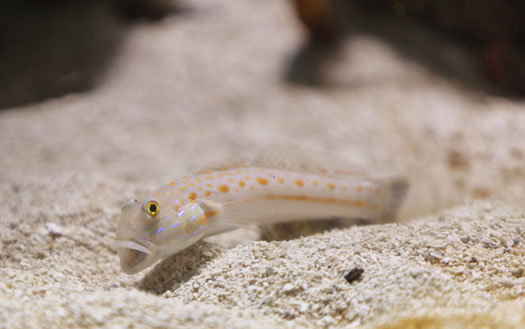- Your shopping cart is empty!
What Are the Best Substrates for an Aquarium?

Substrate is the third-most important decision an aquarium owner can make (and also one of the most essential fish tank supplies), right after deciding which fish to fill it with and what size aquarium to buy. While gravel is one particular type of substrate, it’s not the only kind. This brief guide will go over several substrate materials and clarify their features and which aquariums they’re best for.
Gravel
This most common of freshwater aquarium substrate materials comes in both fine and coarse styles. Gravel is common because it’s a safe and pH-neutral material. It’s best used in fish-only aquariums and as the top layer of a plant aquarium’s substrate. Gravel requires regular upkeep by sucking up uneaten food, but this media is easiest to use a gravel vacuum with.
Sand
When paired with good filtration, sand is another suitable substrate choice. Because sand is self-compacting, food doesn’t get any deeper than its surface, which can be a little unsightly because the waste just sits on the surface, unlike with gravel where the waste disappears within. It’s important to ensure the filter intake isn’t accidentally extracting sand, because the sand will ruin your filter’s motor. In many cases, the filter intake tube will need adjusting to avoid pulling in sand. With good filtration in place, the sand doesn’t have to be cleaned as frequently as common aquarium gravel. Sand is also a naturally occurring material that should please many fish and bottom dwellers. Live sand that comes in a “live bacteria bag” is the best all-around substrate for saltwater reef tanks.
Aragonite
Aragonite is a calcium carbonate sand that slowly activates to adjust pH as high as 8.2. The calcium released by aragonite is a great boon to corals in saltwater aquariums and also with African cichlids because of their preference for high alkaline and high pH water chemistry. Aragonite can be easily combined with live sand or crushed coral. Because it elevates pH, aragonite is only for marine and reef aquariums.
Crushed Corals
This substrate came before aragonite and shares many of the same traits, though its pH elevation tops at 7.6. Most commercial crushed corals contain some aragonite or other calcium-rich materials. Crushed corals are ideal for marine, reef, and brackish water aquariums.
Vermiculate
Vermiculate is a mixture of aluminum, magnesium, and iron. After it’s mined out, vermiculite is heated to sterilize it and destroy any water pockets. It has a high “cation exchange” rate, which affects how plants draw in sustenance, and it will also gradually release potassium and magnesium. It’s ideal for the bottom layer of plant aquariums and should be mixed with either laterite or gravel. This product was popular in the 1990s but has lost its luster for aquariums use these days.
Laterite
Laterite is a porous, weathered tropical clay that has been sunbaked for millennia. Because it’s also rich in iron oxides, it tends to attract nutrients and keep them ready for plants to suck them up via their roots. While cat litter is the cheapest variety of laterite, most litter contains scents and clumping additives that wouldn’t be good for a fish tank. Laterite is the perfect lower layer or substrate for plant aquariums. Again, a product more commonly used a couple of decades ago, but it’s still popular with some diehard plant enthusiasts.
In addition to choosing the right substrate, there are several other important supplies you’ll need for your aquarium. From heaters and aquarium monitors to beneficial bacteria and LED lighting, Aquatic Warehouse has everything you need to maintain a healthy aquarium. Check out our website, stop by our store in Kearny Mesa, or give us a call today at 858-467-9297.
